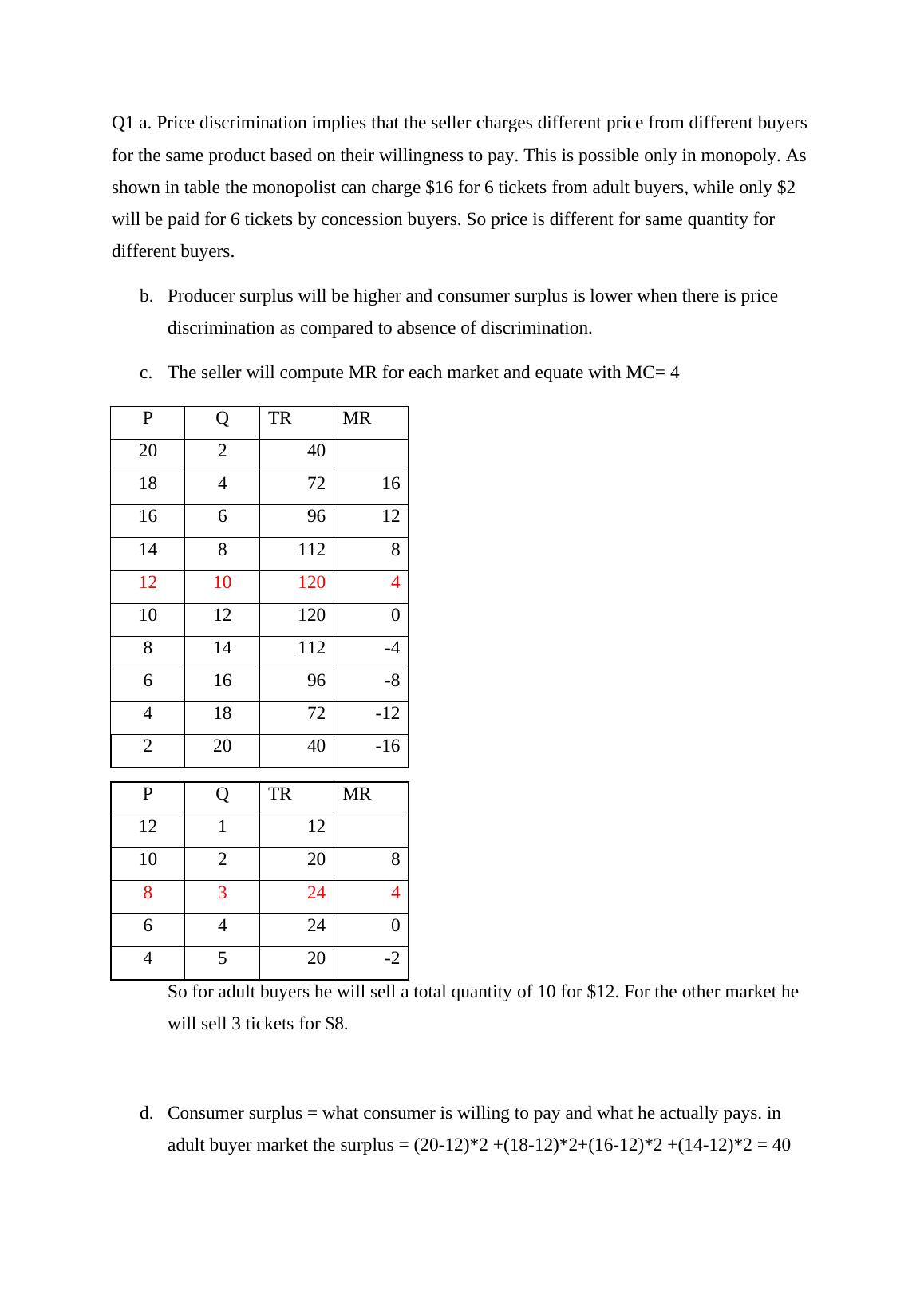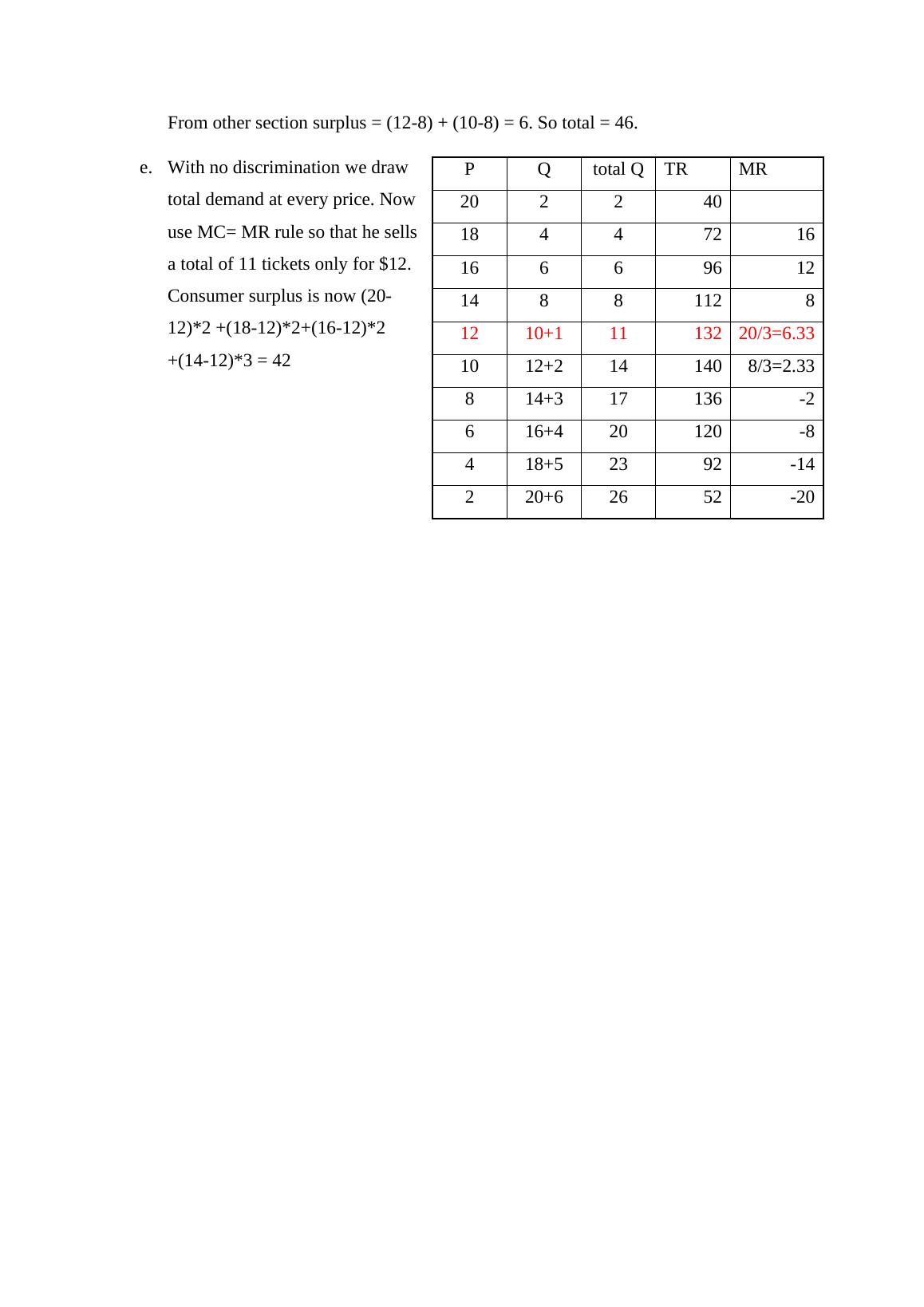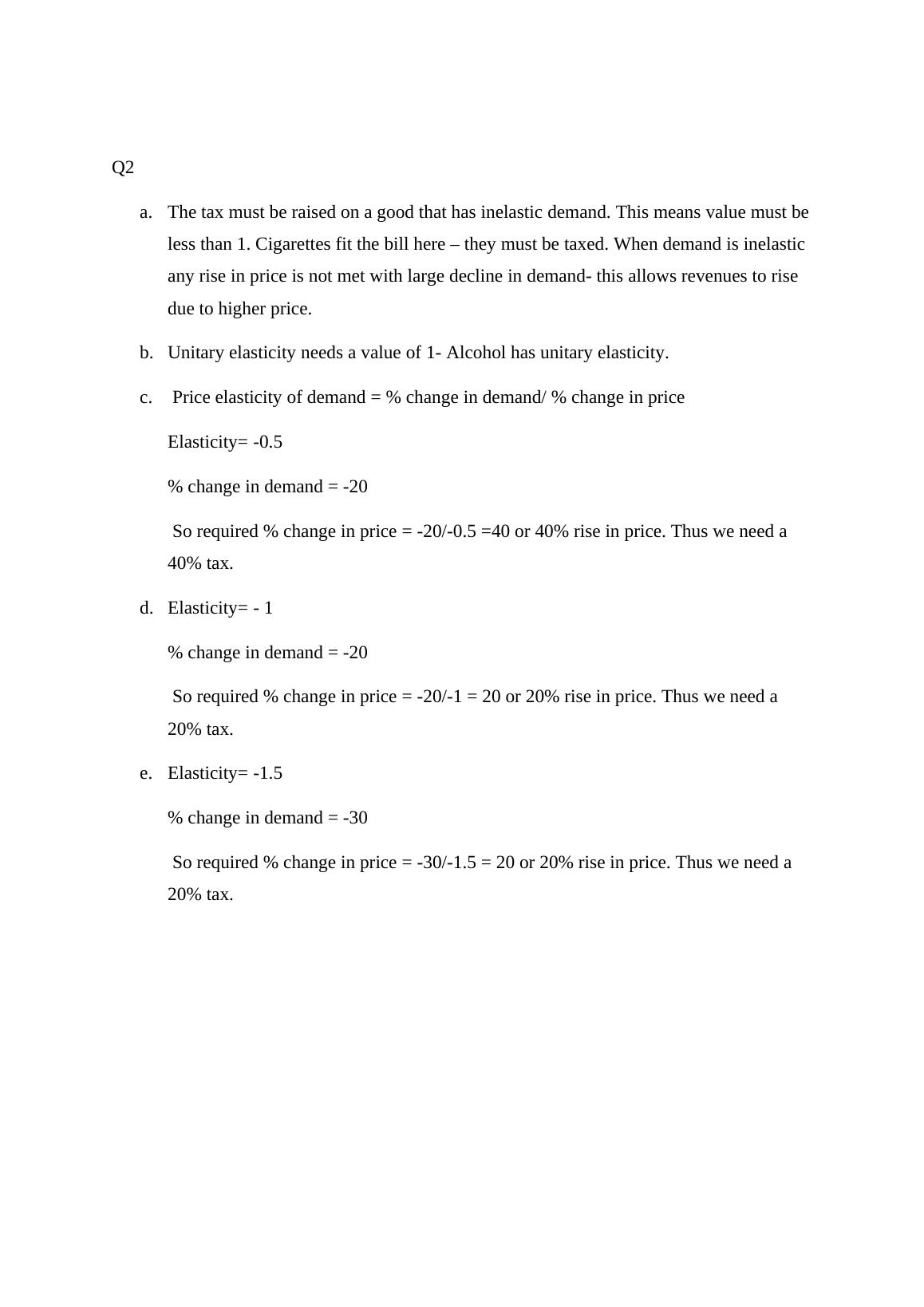BSA 2019 - Price Discrimination
Added on 2020-03-07
9 Pages2325 Words44 Views
End of preview
Want to access all the pages? Upload your documents or become a member.
Price Discrimination- Doc
|8
|2637
|80
Microeconomics Elasticity Of Demand Assignment
|14
|2894
|87
Quantity Demanded Question and Answer 2022
|7
|1449
|10
Microeconomics Study Material with Solved Assignments and Essays - Desklib
|9
|712
|412
Microeconomics Principles: Demand Curve, Equilibrium, Taxation and Game Theory
|19
|1789
|250
Economics Assignment
|11
|1421
|98


